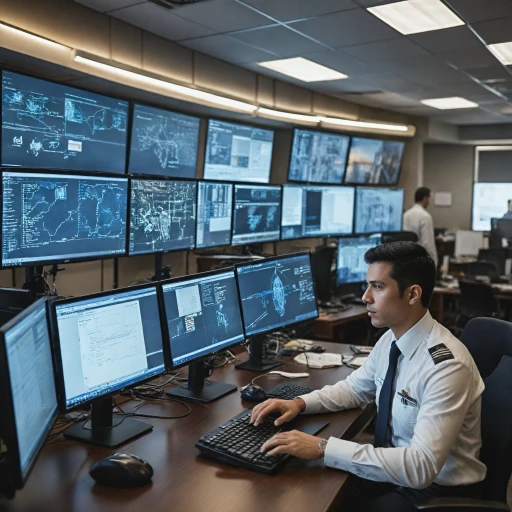
Understanding the Importance of Leadership Development
Recognizing Leadership as a Cornerstone of Business Success
Leadership development is no longer a luxury; it's a necessity for organizational success in today's fast-paced business landscape. The effectiveness of a business largely hinges on the leadership qualities exhibited by its team. Recognizing the pivotal role leaders play within a business isn’t just beneficial—it’s a strategic imperative. Cultivating future leaders requires foresight and a deep understanding of leadership dynamics. As companies evolve, so must their leadership teams. Forward-thinking organizations diligently identify high-potential leaders at various stages to ensure a steady pipeline of talent capable of steering the organization toward its strategic objectives. One vital component of this process is fostering an environment that promotes continuous learning and development. This can be achieved through well-structured leadership development programs that emphasize experiential learning and the enhancement of essential leadership skills. When organizations create a culture that prioritizes these, they not only foster growth but also encourage team members to embrace new roles as leaders learn and develop. Moreover, the implementation of structured mentorship and coaching programs can greatly assist in the development of potential leaders. By pairing experienced senior leaders with emerging team members, organizations entrust seasoned individuals with the task of nurturing the next generation of great leaders. Ultimately, the impact of these development programs must be meticulously measured. Understanding which elements effectively aid in developing leaders and which areas require refinement is critical for ongoing success. To navigate these leadership dynamics effectively, assessing the broader strategy is key. Consider referencing essential inquiries for senior executives to deepen your organization's understanding of leadership development necessities. As you embark on this journey of cultivating future leaders, remember that it’s the investment in human capital that will truly define and elevate your corporation's future trajectory.Identifying High-Potential Leaders
Critical Traits for Recognizing Emerging Leaders
Identifying high-potential leaders within your organization is not merely a task of selecting team members with great performance metrics; it's about discerning those individuals who have the inherent qualities and skills needed for effective leadership. While technical expertise and business acumen are essential, potential leaders must possess emotional intelligence and interpersonal skills that allow them to connect with others and inspire their teams. Observing how individuals handle complex situations or conflicts at work can provide valuable insights into their leadership capabilities. Recognizing varied leadership styles, such as those listed on embracing efficient leadership for strategic success, is crucial in this process. At this stage, it's important to consider the following elements:- Values and Integrity: Future leaders should demonstrate a strong set of values that align with your organization’s vision and mission.
- Agility and Adaptability: In today’s fast-paced business environment, potential leaders need to be adaptable and open to change.
- Proactiveness: Look for individuals who show initiative and a willingness to take on new challenges without waiting for direction.
- Effective Communication: Prospective leaders must be able to communicate clearly and engage with all members of the organization.
- Inspirational Influence: Great leaders have the ability to motivate and encourage team members towards achieving shared goals.
Creating a Culture of Continuous Learning
Fostering an Environment of Growth and Excellence
Creating a culture of continuous learning is essential for the development of effective leaders within any organization. Encouraging leaders to embrace lifelong learning not only ensures they stay ahead in today’s ever-evolving business landscape but also fosters an environment where team members are motivated to reach their full potential. To develop leaders, it's crucial to integrate structured learning opportunities into the fabric of the workplace. Leadership training and development programs should be thoughtfully designed to enhance the leadership skills of high-potential leaders. This often includes offering workshops, seminars, and access to resources that focus on developing key competencies such as emotional intelligence and strategic thinking. A well-rounded development program that supports continuous learning helps future leaders learn through practical experiences and they will become great leaders for tomorrow's challenges. It's equally important to celebrate learning achievements, as recognizing progress reinforces the value the organization places on developing leaders. Integrating feedback mechanisms and encouraging open dialogue between leaders and their direct reports can significantly help in tailoring development programs that align with the individuals’ growth goals. Moreover, by establishing a strong feedback culture, senior leaders can also learn from their teams, ensuring an exchange of insights that benefits the entire leadership team. Ultimately, cultivating a culture that prioritizes ongoing learning enables organizations to not only nurture leadership qualities but also drive business success. As aspiring leaders develop resilience and adapt their leadership qualities to new situations, the organization becomes more agile and prepared for future challenges. For strategies on mastering this crucial aspect of leadership development, you can delve into this detailed guide on maximizing early impact as a c-suite executive.Mentorship and Coaching: Key Tools for Development
Unlocking Potential Through Mentorship and Coaching
In the journey of developing future leaders, mentorship and coaching stand out as pivotal tools. These methods are not just about passing on knowledge; they are about fostering growth, enhancing leadership skills, and preparing potential leaders for the complexities of business dynamics. The essence of mentorship and coaching lies in the personalized guidance they offer, which is crucial for nurturing leadership qualities.
Mentorship provides a platform for leaders to share their experiences and insights with aspiring leaders. This exchange is invaluable as it helps team members understand the nuances of leadership beyond theoretical knowledge. A great leader can impart lessons learned from real-world challenges, offering mentees a chance to develop emotional intelligence and effective leadership skills.
Coaching, on the other hand, focuses on developing specific skills and competencies. It involves structured training sessions where leaders learn to harness their strengths and work on areas that need improvement. This targeted approach ensures that potential leaders are well-equipped to handle their responsibilities and contribute to the organization’s success.
Integrating mentorship and coaching into leadership development programs can significantly enhance their effectiveness. These initiatives help in identifying high-potential leaders and provide them with the necessary tools to excel. They also foster a culture of continuous learning, encouraging leaders to adapt and grow with time.
Moreover, mentorship and coaching can help in creating a supportive environment where direct reports feel valued and motivated. This positive atmosphere is essential for developing leaders who are not only skilled but also empathetic and inspiring.
Ultimately, the success of leadership development programs hinges on the ability to cultivate great leaders who can drive the organization forward. By investing in mentorship and coaching, companies can ensure that their leadership team is prepared to meet the challenges of tomorrow.
Measuring the Impact of Leadership Development Programs
Evaluating the Success of Leadership Initiatives
Leadership development programs are integral in cultivating future leaders within an organization. However, for these programs to deliver effective results, it is essential to measure their impact systematically. This process begins with setting clear goals that align the development programs with the overall business strategy.- Quantitative measures might include the progress and career advancements of developing leaders, their influence on team performance, and how their decisions contribute to business objectives.
- Qualitative feedback from team members and direct reports can offer insights into improved leadership skills and emotional intelligence.
Overcoming Challenges in Leadership Development
Addressing and Navigating Obstacles in Leadership Cultivation
The process of developing leaders is fraught with various challenges, demanding acute awareness and proactive management from senior leaders. Organizations often encounter resistance to change, both from within the leadership team and from potential leaders themselves. This highlights the necessity for adaptability and a willingness to embrace new methods of leadership development.
Leaders may find it difficult to allocate time for leadership training amidst pressing business demands. However, prioritizing time for this is vital for long-term organizational success. It's essential to communicate the importance of leadership skills development to overcome this challenge, emphasizing that nurturing future leaders contributes significantly to sustainable growth.
Developing leaders is not just about training, but also about instilling a culture that values continuous learning and encourages exploration of new skills. Fostering an environment that promotes learning from both incentives and setbacks engages team members in the development process, making them an integral part of the organization's growth.
Another hurdle is identifying high-potential leaders who possess the required emotional intelligence and leadership qualities. It's crucial to evaluate potential leaders not only based on their current performance but on their ability to grow and adapt. Engaging them in comprehensive development programs that address these fluctuating requirements is imperative.
Organizations often struggle to measure the real-world impact of leadership development initiatives. Developing effective metrics and feedback mechanisms to assess progress and outcomes can aid leaders in refining their approach and achieving better results. It is through continued assessment and refinement that great leaders emerge, driving the organization forward.
By addressing these challenges head-on, senior leaders can create a robust environment that fosters the development of future leaders, ensuring that the organization remains dynamic and competitive. Effectively embracing these strategies will not only help in overcoming inherent obstacles but also enhance the organization's capacity to develop leaders who can lead with confidence and vision.














